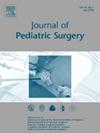Surgical Treatment of Perforated Necrotizing Enterocolitis and Spontaneous Intestinal Perforation in Extremely Low Birth Weight Premature Infants- Is Resection and Primary Anastomosis a Safe Option?
IF 2.4
2区 医学
Q1 PEDIATRICS
引用次数: 0
Abstract
Introduction
Necrotizing enterocolitis (NEC) and spontaneous intestinal perforation (SIP) lead to significant morbidity and mortality in extreme-low birth weight (ELBW) infants. This study examined surgical management and outcomes for these conditions.
Methods
A retrospective chart review of ELBW infants (birthweight <1000 g) who had laparotomy for NEC or SIP managed with primary anastomosis (PA) and stoma formation (SF) at a single high-volume center from 2000 to 2022 was performed. Patient data included demographics, pre-operative status, operative findings, post-operative complications, and outcomes at discharge and at 12 months. Statistical analyses were performed using Fisher's exact test and the Mann–Whitney test.
Results
Of 132 patients included, 40 underwent PA and 92 underwent SF. SF patients had lower birth weights and older post-gestational age at surgery. SF patients exhibited higher pre-operative CRP and lower platelet counts. No significant differences were found in intra-operative findings. Post-operatively, SF patients had higher conjugated bilirubin levels, longer hospital stays, and longer times to full enteral feeds. Mortality rates were similar between groups. Nutritional outcomes at 12 months did not significantly differ. Micropreemies (weight <750 g at surgery) had higher mortality and more comorbidities, but no significant differences were observed between PA and SF management cohorts.
Conclusion
PA is a safe alternative to SF for managing NEC and SIP in ELBW infants with shorter hospital stays and faster progression to full feeds but the severity of pre-operative illness may influence surgical decision. Further studies are needed to refine patient selection criteria and optimize surgical outcomes.
Type of Study
Clinical Research.
Level of evidence
Level III Retrospective Comparative Cohort Study.
求助全文
约1分钟内获得全文
求助全文
来源期刊
CiteScore
1.10
自引率
12.50%
发文量
569
审稿时长
38 days
期刊介绍:
The journal presents original contributions as well as a complete international abstracts section and other special departments to provide the most current source of information and references in pediatric surgery. The journal is based on the need to improve the surgical care of infants and children, not only through advances in physiology, pathology and surgical techniques, but also by attention to the unique emotional and physical needs of the young patient.

 求助内容:
求助内容: 应助结果提醒方式:
应助结果提醒方式:


